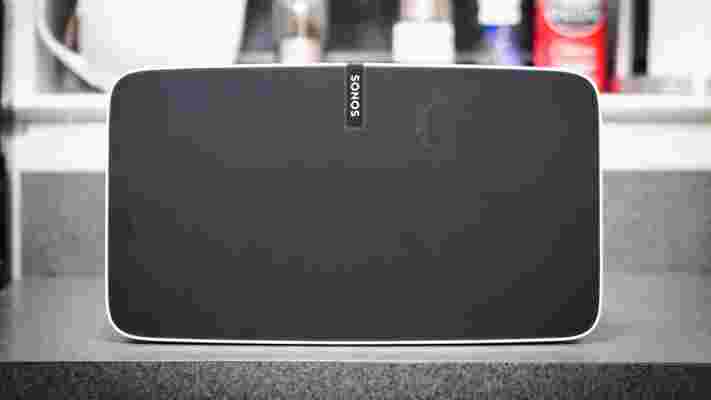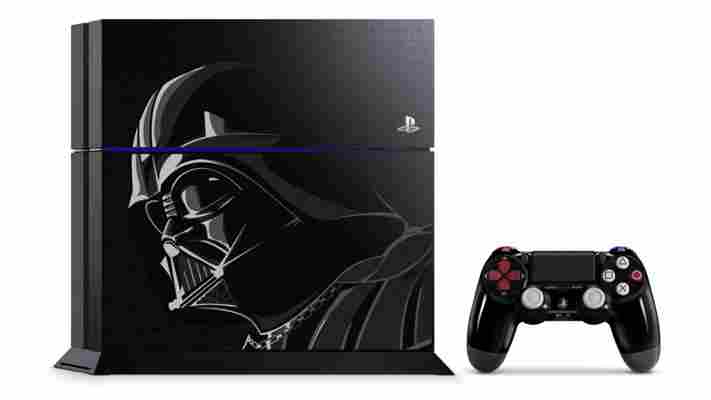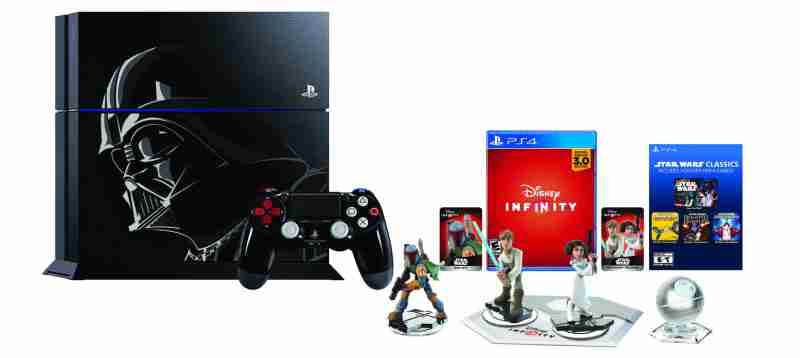Given the furore around Apple devices, the fanatical devotion of many of the company’s customers and the world’s currently unquenchable thirst for retro-themed products, these limited edition iPhones aren’t likely to be difficult to sell.

Created by ColorWare , only 25 iPhone 6s and 6s Plus models will go on sale, with prices starting from $1,599 for a 16GB iPhone 6s and rising to $1,799 for the 128GB model. Prices for the larger 6s Plus option start from $1,699 and rise to $1,899, making it about twice as expensive as a regular iPhone.
The company says the design was inspired by the Apple IIe and uses a matte vanilla-colored exterior and fake vents to recreate the overall feeling. The handsets also have the 80s version of Apple’s rainbox logo.
As I said before, ColorWare is going to have no problem whatsoever in selling these. If you’re interested, you can buy one now and it should ship in about four weeks.
➤ ColorWare
Sonos Play:5 review: Worth the money on audio quality alone
About a month ago, Sonos announced its first refresh of its original speaker, the Play:5, and it’s essentially a complete revamp . When my colleague Owen Williams went hands-on with it , he was impressed by its new design, improved sound quality and fancy TruePlay software that optimized the speaker’s output for your room’s acoustics.

After we both spent some more time with the speaker in our own homes, we came away even more impressed.
Sonos thoroughly redesigned the Play:5, and it’s mostly for the better.


Gone are the physical buttons above the speaker, replaced by a capacitive strip with volume up, volume down and play/pause buttons. To skip tracks, you can simply swipe from left to right and vice versa.
Meanwhile, the back is now cleaner, with just a power connector, a 1/8″ line-in jack and an ethernet port. That means you’re losing the second ethernet port and headphone jack.
While I don’t mind the loss of the extra ethernet jack for connecting to another speaker – WiFi is reliable enough on the new Play:5 that I never thought to use a physical connection – I missed the headphone jack; I often plug in when watching movies late at night so as to not wake my roommates.
The sacrifice might simply be because there’s not enough space inside. Sonos has installed an extra tweeter, for a total of six drivers: three mid-woofers and three tweeters. Two of those face outwards for better stereo separation when used in landscape mode. It makes the speakers surprisingly heavy, at 14 pounds each.
The speakers also now feature an orientation sensor, and will automatically tune their sound depending on whether you place them horizontally or vertically. And because the Sonos logo is symmetrical, it never looks upside down no matter which way you place it. Clever.
As a first time Sonos user, I wasn’t sure what to expect in terms of the setup process. I’m wary of configuring most wireless audio devices due to being an old school cables guy, but I was up and running in just a few minutes.
Once I downloaded the Sonos app, installing the speakers was as simple as going through a few steps, pressing a sync button behind the speakers, and waiting for Sonos to install a few firmware updates to the speakers.
Similarly, pairing a second speaker for stereo sound added just another couple of minutes; the app will instruct you to press the sync button to identify the left speaker, and you’re ready to go.
Thankfully, I never experienced any connectivity issues despite living in densely populated NYC building with dozens of Wi-Fi networks around me. I was particularly worried about the lack of 5 Ghz connectivity as that was a big issue with the old Chromecast, but in practice, performance was never a problem.
If you’re on iOS, Sonos will ask you to setup its TruePlay functionality , which adjusts the speaker’s sound to compensate for your room’s acoustics and keep sound consistent no matter where you put your speakers. If you don’t have an iPhone or iPad, you can borrow a friend’s and the speakers will remember your settings.
The Sonos app will guide you through a tuning ritual, which involves waving your device up and down in the air slowly and pacing around your room while the speakers play this sci-fi-sounding wavy noise. It plays for about 50 seconds, and then you’re good to go.
The surprising part? It works… mostly. I was a perfect test subject: there’s not much space for me to place the speakers in my small apartment, meaning I often kept them directly behind my TV or on the floor. Obviously, that’s not ideal, which is where TruePlay comes in.
Placing the speakers behind my TV mainly affects the treble, muffling voices and killing much of the stereo separation. TruePlay was able to recover most of the highs, such that I couldn’t notice a big difference compared to when I placed the speakers in front of the TV.
Likewise, my colleague found it significantly improved the sound when he placed the speaker in his kitchen, though it was less noticeable in larger rooms.
For the record, Sonos also gives a brief description of the degree it changed your speakers’sound to match your environment after you complete the setup process. Keeping the speakers in front of the TV, Sonos said it only had to make small adjustments, whereas when placed behind the TV, the app notified me of larger acoustic differences.
That said, it’s not perfect; stereo separation in particular still suffers from having the sound diffused behind my screen, and truth be told, I’m not sure how much of an advantage TruePlay brings in over quality equalizer settings.
Still, I never expected it to create miracles. It takes a couple of minutes, and it mostly ‘just works.’ More importantly, it can provide a huge boost in sound quality for the average user who isn’t as persnickety about sound and isn’t willing to spend hours tuning his or her EQ just right.
Also worth noting: TruePlay is coming to all Sonos speakers, so you won’t need a new rig to try it out.
So how do they actually sound? In a word: awesome.
I don’t have too much experience the previous generation of Sonos speakers, so Owen chimed in to compare with his old Play.
My own impressions were similar. For reference, I spent most of the time listening in the vertical stereo setup, as I found that produced the most realistic stereo imaging when sitting directly between the speakers.
And I do mean realistic. Listening to a sample of Tchaikovsky’s Manfred Symphony , I could pinpoint where every instrument was in my imaginary orchestra – violins to the left, trumpets left of center cellos to the right, basses a bit deeper beyond that.
Likewise on more modern tracks, sparkling treble reproduction made it easy to hear every shake of the cymbals in Paramore’s ‘Ain’t it Fun ‘. And once again, the excellent imaging meant it felt like Hayley Williams was singing right in front of me.
It’s an accurate soundstage that handily beat my amplified Yamaha bookshelf speakers, as well as my recollection of the KEF X300A (an audiophile favorite at a similar price). Watching ‘Star Wars: Episode IV’ by after connecting my TV through the line-in jack meant hearing TIE fighters convincingly whiz by from one side of the room to the other.
As for stereo in the other arrangements, Sonos does better than most with just one speaker thanks to its angled tweeters (our ears best detect positioning in the treble range), but it’s obviously still much more compressed than with a dual-speaker setup. Meanwhile, the horizontal stereo arrangement creates a wider soundstage for bigger spaces, at the expense of some accuracy.
It’s worth experimenting to see what you prefer, but if you can pony up the money, definitely go for two speakers over one; the stereo imaging alone is worth it.
Equally impressive is the bass, whether you’re using one speaker or two. Now, I don’t consider myself a basshead – I’ll take accurate sound and a neat soundstage over overblown bass any day of the week – but the Play 5 goes really low. Sonos doesn’t provide a frequency response chart, but I found the Play:5 could handily rumble all the way down to about 25 hz before the speakers gave out. My old speakers had pretty much fizzed out completely by around 60 hz.
And you can push them further too. By default, Sonos keeps the sound relatively tame; you can feel a physical kick on some tracks and movies, but it’s nothing too overwhelming. But then I crank up the bass in Sonos app’s EQ, and suddenly everything in my house was shaking. I never dared keep the max setting on for long.
To reiterate my colleague’s comments: there’s pretty much no reason to get a subwoofer, especially if you live in an apartment with other people around you like I do. There’s about as much sub-bass rumble as you’ll ever need.
Sonos gets almost everything right with the new Play 5. Sure, some people (like me) will lament the lack of a headphone jack, others will prefer the physical keys, but the new design, TruePlay tuning and awesome sound make it a worthwhile upgrade.
That said, while Sonos has remained the defacto platform for wireless speakers, it has some serious competition now in the form of Google Chromecast Audio . At just $35 bucks, it can turn any old speakers into a wirelessly connected system. If you have a pair of decent speakers lying around and are mainly looking to add wireless connectivity the connectivity, it’s hard to ignore Google’s offering, especially now that it comes with Spotify support . For most people who already own speakers, Chromecast Audio will simply be the better value.
It’s a good thing Sonos improved its sound quality then, because the Play:5 feels worth its $499 price tag – $100 more than the previous model – on pretty much the sound alone. And if you’re not a particular about sound quality, Sonos has the cheaper Play:1 and Play:3. The Play 5 is meant to be the best of the best.
Sure, you can probably create an audiophile rig with a pair of bookshelf speakers, an amplifier and Chromecast Audio that will be comparable for the price, but not with this level of connectivity, convenience or easy tuning via TruePlay. And certainly, there’s nothing like it for a single-speaker setup, though I’d definitely recommend springing for two for to get the most out the Play:5.
In any case, the Sonos app still has some advantages over Chromecast Audio – mainly its tight integration of various different music services all from one app, and the fact that you can keep music playing even if your phone or computer is turned off.
If you’ve got the budget and are looking for some connected speakers, the Play:5 are definitely worth consideration in time for their November 20 launch date. Your ears will thank you.
➤ Sonos Play 5
The force is strong with this limited edition Darth Vader-inspired PS4
Sony has announced a limited edition PlayStation 4 console with Darth Vader artwork, which will be available as part of two ‘Star Wars’ bundles this November.

Both bundles include a custom 500GB PS4 as well as a DualShock 4 wireless controller in a color palette inspired by Darth Vader’s chest panel.
The Limited Edition Star Wars Battlefront PS4 Bundle comes with ‘Star Wars Battlefront Deluxe Edition’, along with a voucher to download four older titles from the series: Super Star Wars, Star Wars: Racer Revenge, ‘Star Wars: Jedi Starfighter’ and ‘Star Wars Bounty Hunter’.
There’s also a Disney Infinity 3.0 bundle. It’ll be available exclusively at Walmart and include everything in the package above along with a copy of Disney Infinity and a set of Infinity figures featuring Luke Skywalker, Leia Organa and Boba Fett.


The bundles will be available on November 17. Sony says it will begin taking pre-orders soon.
➤ Darth Vader-Inspired PS4 System Revealed, Two Star Wars Bundles Out This November [PlayStation Blog]
Read next: This awesome Star Wars infographic shows off the series’ influence on future franchises
